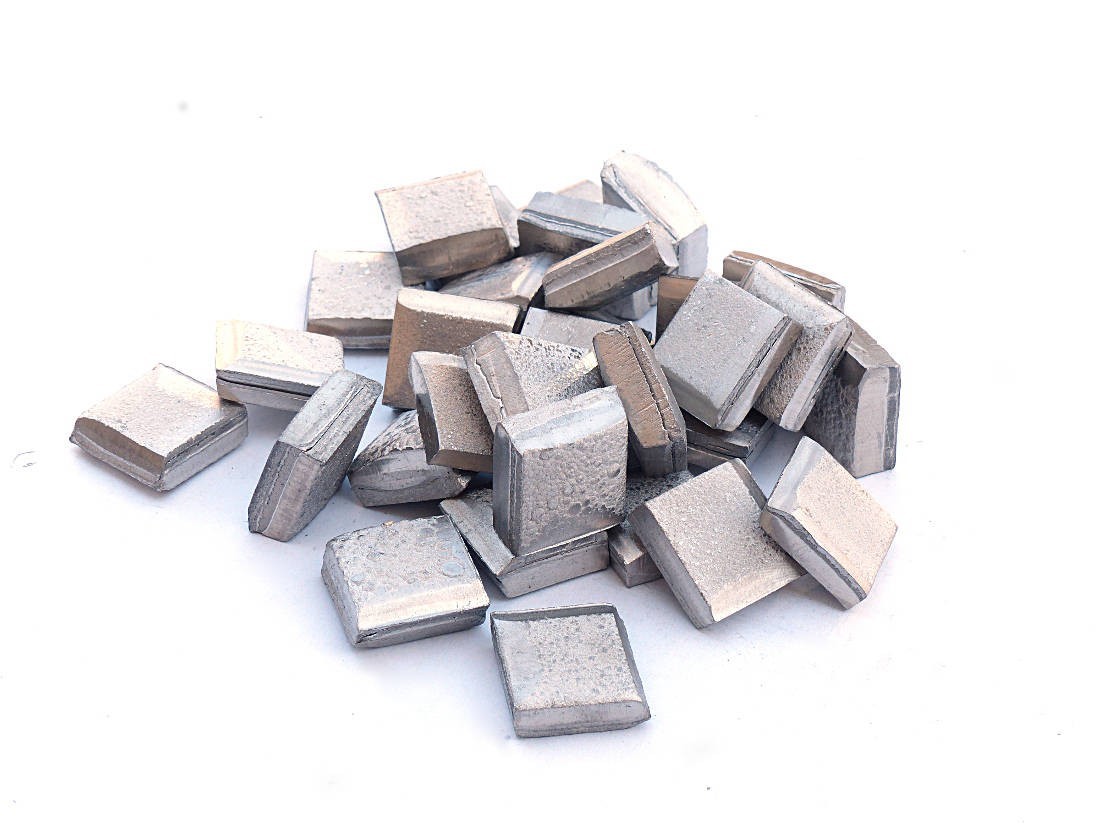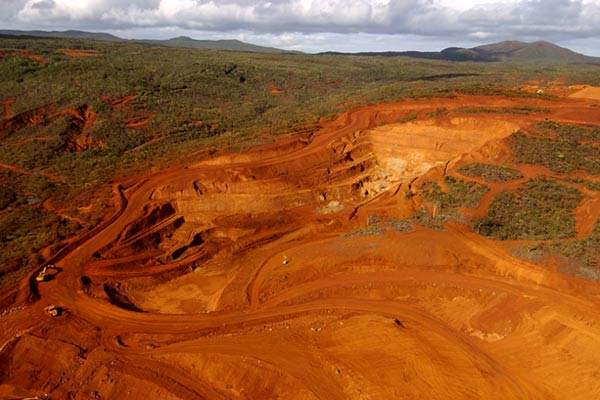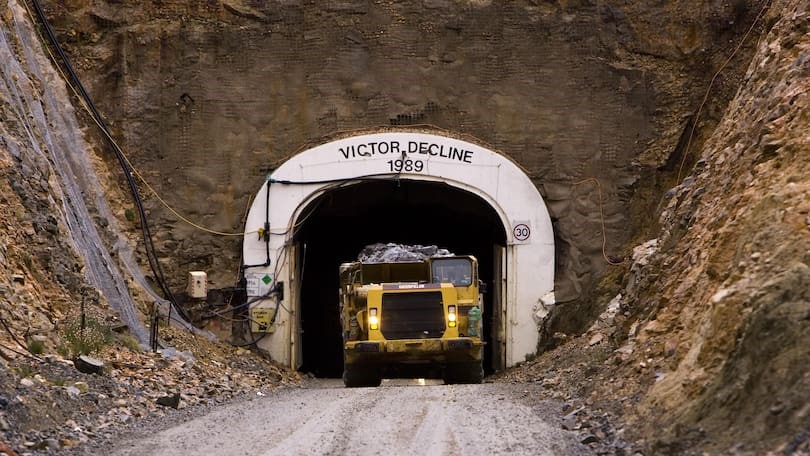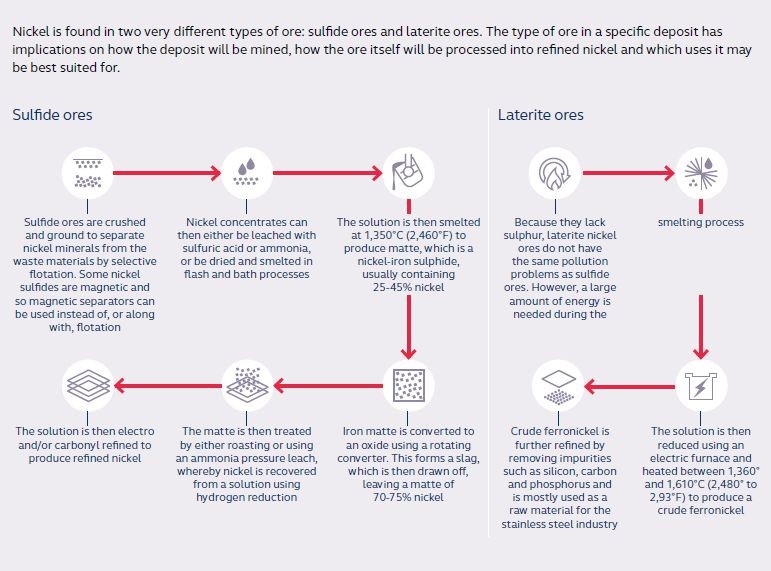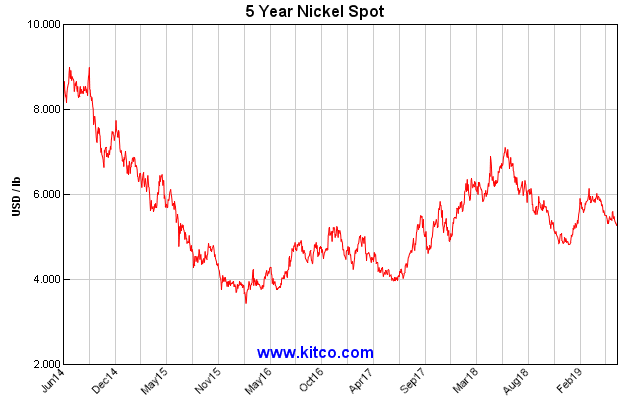Nickel – A Brief Introduction
Nickel is said by many to be the fifth most abundant element on Earth. This is predicated upon the assumption that the Earth’s core is primarily composed of iron and nickel. In the crust, however, it is one of the least abundant industrial metals, at around 80ppm. In order of abundance the main industrial metals are aluminium, iron, magnesium, titanium, manganese, copper, zinc, lead, nickel, chromium, tin, tungsten and molybdenum.
Nickel is silver in colour with a slight yellow tinge. It is one of only four elements that are magnetic at room temperature, the others are iron, cobalt and gadolinium. There are 5 stable isotopes of nickel and around thirty that are unstable. The most common stable isotope is 58Ni, with 28 protons and 30 neutrons in the nucleus.
Refined +99.9% nickel from Norilsk in Russia. Courtesy metalshipper.com.
Occurence
Nickel is typically found in ultramafic rocks in association with iron and magnesium. Where the ultramafic rocks are weathered at or near the surface they form laterites which may contain economic concentrations of nickel.
The unweathered rock will not usually contain economic grades of nickel. However, the weathering process can concentrate the nickel to mineable grades. The nickel is typically contained in limonite [(Fe,Ni)O(OH)] or nickel silicates.
The Goro lateritic nickel mine in New Caledonia
Where nickel-bearing ultramafics are fresh and unweathered, the nickel occurs as the sulphide pentlandite [(Ni, Fe)9S8]. Nickel sulphide deposits are typically buried and can extend to great depths.
Nickel also occurs in a wide range of foods, typically in legumes, nuts, grains, soy milk, chocolate and some canned foods.
Entrance to the Long Nickel Mine near Kambalda in Western Australia
Processing
The diagram below shows the main processing routes for the two types of ore.
Two main types of nickel processing. Courtesy LME
Production
The main nickel producing countries are Australia (sulphide and laterite), Canada (sulphide), Indonesia (laterite), New Caledonia (laterite), Philippines (laterite) and Russia (sulphide). In 2018 total world nickel production was estimated by the US Geological Survey to be 2.3M tonnes. The world’s total reserves are about 90M tonnes, with a further 130M tonnes of resources.
In Australia the main producers are BHP Billiton plc (ASX:BHP), Rio Tinto Ltd (RIO), Independence Group NL (IGO), and Western Areas NL(WSA).
Uses
Nickel is sold for first use as refined metal (see first image above) or as ferronickel. Over half of all nickel produced is used in making austenitic stainless steels.
Austenitic are the most common type of stainless steels, containing 16 to 26 % chromium and up to 35% nickel. They are non-magnetic, highly corrosion resistant and not heat treatable. The other major stainless steel types are ferritic, which contains up to 27% chromium but no nickel and martensitic, which has up to 12% chromium and little if any nickel.
Another main use of nickel is in nickel-based superalloys. The alloys are used in jet engines and in turbines used for electricity generation. The balance is used in alloy steels, rechargeable batteries, chemicals, coins, and for plating.
Price
Nickel is priced in USD/lb and USD/t. At the time of writing the spot price is USD5.38/lb and the official LME price is USD11,590/t bid and USD11,600/t offer.
Conclusion
Nickel is an industrial metal whose demand is closely tied to stainless steel production. It is not common in the Earth’s crust which is why it is considerably more expensive than the other major industrial metals.
Future demand will largely be driven by stainless steel production. Most commentators are predicting continued strong growth in stainless production. The other potential area of growth is in rapidly expanding applications such as rechargeable batteries for electric vehicles.

